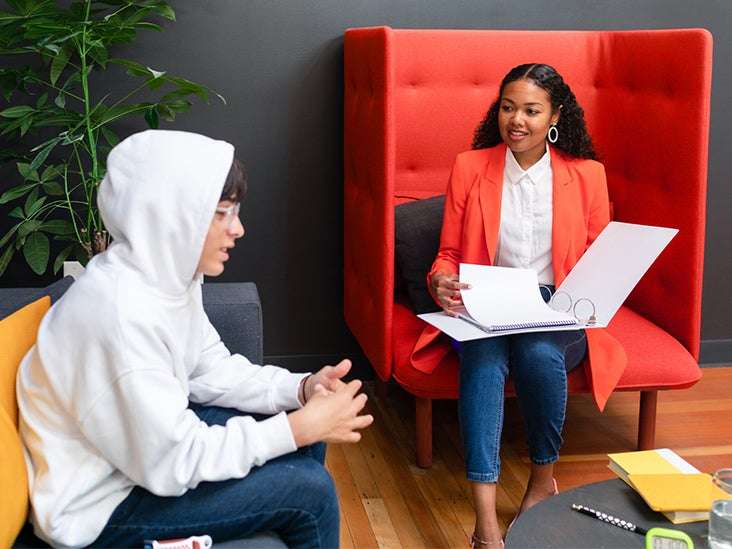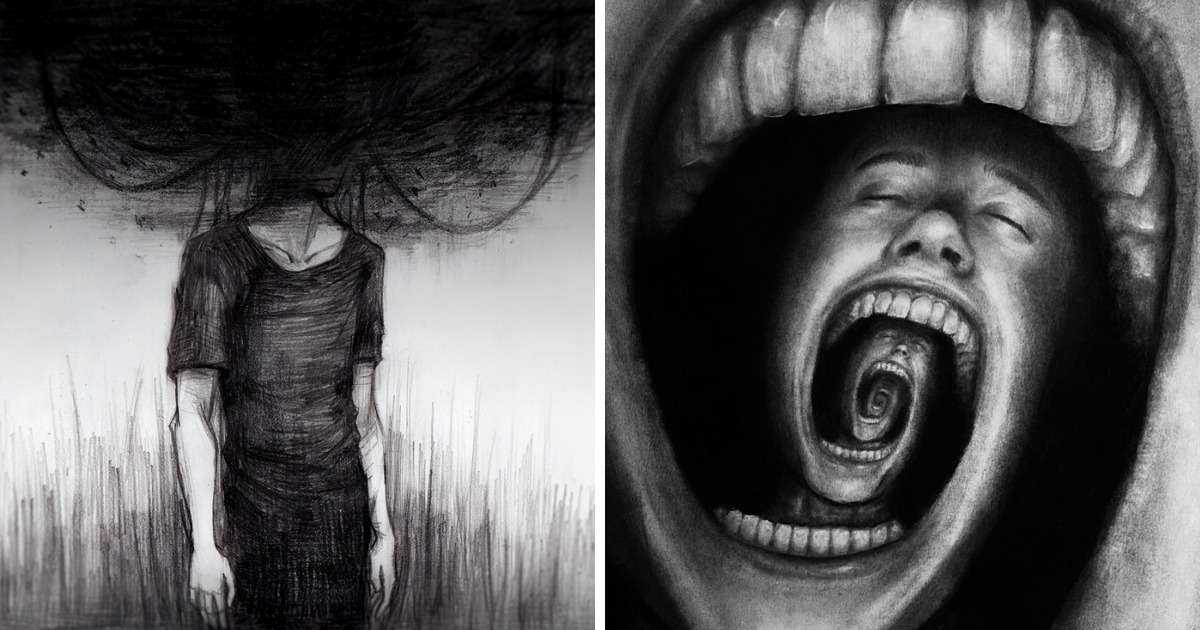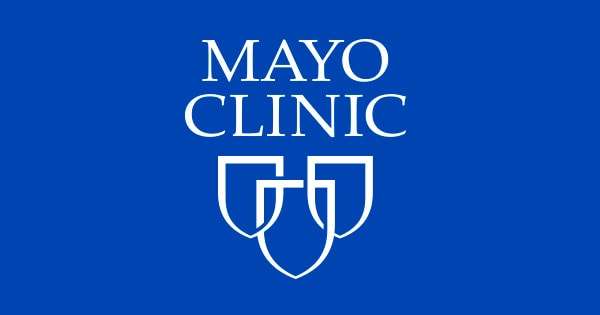
Share on Pinterest
A new study suggests that laser light therapy may improve short-term memory, which may have implications for treating ADHD. By Lorena/Stocksy
- A new study shows that laser light therapy can improve short-term working memory in young adults.
- The findings have future implications for treating health conditions that impact working memory, such as ADHD.
- Despite the promising results, larger, more rigorous studies on diverse populations are still needed to determine the effectiveness of laser light therapy to improve cognition.
Whenever you need to remember the name of a person you just met, a set of instructions, or a shopping list, you rely on working memory.
This type of temporary memory is used for information needed in the present moment. It holds things that have not yet been committed to long-term memory.
Working memory is not just for recalling facts, though. It supports a number of day-to-day mental functions such as learning and problem-solving.
While most people have difficulty retaining information at times, especially when interrupted or distracted, certain health conditions can also impact working memory. This includes attention deficit hyperactivity disorder (ADHD), schizophrenia, and Alzheimer’s disease (AD).
To improve working memory, a new study suggests that it may be possible to offset some of these cognitive deficits by using laser light therapy.
The study was recently published in Science Advances.
Using laser therapy to improve working memory
Researchers at the University of Birmingham in the United Kingdom and Beijing Normal University in China found that laser light therapy improved working memory by around 10% in healthy volunteers.
The treatment, known as transcranial photobiomodulation (tPBM) delivers near-infrared to infrared light to the brain tissue through the scalp and skull.
Researchers are currently investigating tPBM as a way to improve cognitive function as well as to treat other conditions that affect the brain including:
- major depressive disorder (MDD)
- Alzheimer’s
- traumatic brain injury (TBI)
“People with conditions like ADHD or other attention-related conditions could benefit from this type of treatment, which is safe, simple and non-invasive, with no side-effects,” study author Dongwei Li, a visiting PhD student in the University of Birmingham’s Centre for Human Brain Health, said in a news release.
Improved performance on working memory tasks
The new studyincluded 90 male and female healthy volunteers ages 18 to 25 years old.
Researchers carried out several experiments in which participants were treated with laser light to the right prefrontal cortex, an area of the brain involved in working memory. The wavelength of light used was 1,064 nanometers (nm), in the near-infrared range.
Researchers also conducted other experiments using a shorter wavelength of light (852 nanometers, also near-infrared), and with laser light applied to the left prefrontal cortex.
Each participant was also treated with a sham, or inactive, stimulation to rule out the placebo effect. The active tPBM and sham sessions were done on separate days.
After 12 minutes of the tPBM or sham session, participants completed a working memory task, which involved remembering the orientation or color of a set of items displayed on the screen.
Researchers found that people who received the 1,064-nm tPBM treatment to the right prefrontal cortex performed about 10% better on the working memory task compared to their performance during the sham session.
Researchers also found that tPBM using 852-nm light had no effect on people’s performance on the working memory task. Neither did tPBM when applied to the left prefrontal cortex.
In addition, researchers used an electroencephalogram (EEG) to monitor the electrical activity of the brain during the sessions. The EEG showed changes in brain activity that predicted improvements in working memory performance.
Researchers are not certain why tPBM improved working memory, or how long the positive effects on working memory will last. More research, including rigorous studies with a longer follow-up on other age groups and populations, is needed to understand the effects.
Other cognitive benefits of laser therapy
Dr. Jason Huang, neurosurgeon and chairman of the Department of Neurosurgery at Baylor Scott & White Medical Center — Temple, TX, said that one of the unique aspects of the study is that the researchers ran four different experiments.
This includes comparing the 1,064-nm and 852-nm tPBM, “which has never been done before,” he told Healthline. “This alone contributes to the existing literature.”
Huang added that the study design seems to be “efficient” in spite of the small number of participants included. However, future research could benefit from including more participants.
Huang’s own research shows that tPBM can boost a number of cognitive abilities in people with mild to moderate dementia.
“We observed very notable improvement in attention, concentration and focus on tasks, and motor execution in our patients treated with active tPBM,” he said.
Unlike the new study, which treated only the prefrontal cortex, Huang’s study used a light treatment helmet device that illuminated more areas of the brain. In addition, treatments in his study were done twice a day for 8 weeks, compared to a single 12-minute session in the new study.
Although tPBM devices are commercially available, Huang said none of these are approved by the Food and Drug Administration (FDA), which limits their use in the clinic.
“Before recommending [this therapy] for use in treating patients clinically, more studies with a larger scope are needed in order to have additional evidence-based observations,” he said.
Working memory deficits in ADHD
Recent studies estimate that up to 85% of children diagnosed with ADHD have some problem with their working memory.
“Those who do struggle with working memory tend to have more intense symptoms of inattention, impulsivity, and hyperactivity,” Dr. Nicole Mavrides, medical director of child and adolescent psychiatry at PM Pediatric Care Behavioral Health, told Healthline.
In addition, since working memory is needed for processing and storing information, Mavrides said children with a working memory deficit may have difficulty learning and memorizing things at school, learning to read, or performing math problems.
They may also have difficulty with multi-step instructions, she said, such as putting on their shoes, jacket and backpack.
The authors of the new study said because tPBM is safe, non-invasive, and cost-effective, it would be suitable as a way to boost working memory in people with ADHD.
However, additional research — including studies involving people with ADHD — is needed “before [tPBM] can be applied to improve cognition in healthy and clinical populations,” the authors said.
In the meantime, there are already ways for parents to help boost their child’s working memory, which can make it easier for a child to do the other cognitive tasks that rely on working memory.
“The best ways to target and improve working memory in kids with ADHD tend to be stimulant medications,” said Mavrides, “and practicing [and] training strategies — memory cards [and] games, letting your child teach you the material, active reading, etc.”
Takeaway
The cognitive benefits of laser light therapy are an area of ongoing research.
Scientists are particularly interested in how laser light therapy might positively affect the human brain and improve symptoms associated with ADHD, MDD, and Alzheimer’s, among others.
While people of all ages may experience short-term working memory deficits to some degree, these difficulties are especially pronounced in individuals experiencing neurocognitive issues.
If the findings from this new preliminary study prove to be effective, laser light therapy could eventually be used to improve working memory in people with conditions affecting the brain.
For now, if you have concerns about your own working memory or your child’s, you may wish to talk with your healthcare team about potential treatment options.
Nina (27 years, Dutch) participated in the PROUD-study and followed our light therapy. In this interview she describes the influences light therapy had on her ADHD symptoms.
What is it like to live with ADHD?
Please describe your main symptoms.
The symptom I experience as the most troublesome is making new friends. It is harder for me to make new friends, knowing I have fewer emotional and cognitive skills than peers. I am more sensitive to persons and situations and I experience them as more severe.
Besides, it is harder for me to see things in perspective and my perspectives change a lot over short periods of time. This makes it harder to look further in the future when making decisions. I also have less patience and it is harder for me to concentrate on a task.
How does ADHD influence your life?
As I explained in the question before it can be tough to make friends. Concerning work, my ADHD has positive and negative effects. The negative effects are my lack of concentration, sometimes a job has to be done at a certain moment when I have no concentration, which can be a real struggle. The positive side is that I am creative and my spatial development is good. These are qualities that come handy at my job. Also my intelligence helps me. Because I am smart I can work fast at the moments my concentration is good, in order to compensate for the moments where my concentration is lost.
Do you think ADHD has any positive influences in your life?
It sure has, but these influences often last for a short period of time. I can be really enthusiastic and I am good at identifying people. This quality makes me a really good friend. Also my creativity is a positive effect of ADHD.
How have you been treated (medication/ psychotherapy)? What are the effects?
For a year and a half I have lived internally in a group especially for adolescents with ADHD and/or autism. Here I followed a training to improve my social abilities, how to engage in relationships with others and to be more independent.
From my 16th I take medication. I have switched a lot and tried different kinds of medication. Much of them did not work well for me, I even tried anti-depressants which made me feel sad. I am currently taking Stratera (short acting) and this works well for me. I don’t take it regularly but only at moments where I think I need it.
Study and intervention
How did you learn about the study?
I am regularly searching the internet to learn more about ADHD. This time I was searching information about comorbidity and neurodiversity and this is how I found your website, by chance.
What motivated you to participate?
It is a good thing that more research is done and I find it important to contribute. The more research is being conducted, the better others with ADHD can be helped. It is of great importance of me to be able to be a part in this. As long as we do not contribute to this kind of research, nothing will chance.
What were your expectations about the study before you started?
To be honest I did not have any expectations because I did not want to be affected by them.
What intervention did you participate in? When?
I participated in the bright light therapy from the 18th of October (2018) until the 10th of January (2019).
What did you like about the intervention? What did you dislike about the intervention?
At the beginning it was kind of hard, I found it really hard to be sitting still half an hour in the morning. Normally I rush through the mornings and do not really sit still at all. My solution was to put the lamp at my nightstand and sit in bed for half an hour in the morning, waking up next to the lamp. You can adjust the brightness of the lamp so I started with dimmed light and increased brightness step by step. Important is to sit upright because otherwise there is a chance of falling back to sleep!
In the beginning I had not realized what an impact this therapy has on your daily life, you really need the motivation to sit through, every day. After some time I got adapted to a new rhythm which made it easier to follow the light therapy for 6 times week. Only on Saturdays I skipped the sessions because of the weekend.
Was the intervention helpful?
It definitely has positive influences. The biggest change I have experienced is the adaptation to a more natural day/night rhythm. I was hoping a side effect would be falling asleep faster but unfortunately this was not the case for me.
The first days I experienced some negative side effects, which are explained in the bright light manual. Maybe it would be better if I had not read the manual because I was so focused on the experience of these side effects. What I felt was a really grumpy mood in the mornings. Luckily it only lasted for a few days.
Are you planning on continuing the intervention?
No, I have no plans of buying a lamp myself. Looking back at the intervention I think I would benefit more by participating in the aerobic exercise intervention, because sitting still for half an hour without a clear purpose is tough. Of course I did adapt to a better and more natural day/night rhythm because of the bright light therapy, but I think this could also be accomplished by going to bed at the same time every day.
Was it difficult/easy to use the App?
Definitely not difficult. The researches informed me about the sensor and how it might be inconvenient in the beginning but I only had to get used to it during the nights. The app was really clear and straight-forward, easy to use. I did forget the phone a few times, making me drive back home, but if you wear pants with pockets this should not be a problem.
Would you recommend other people with ADHD to participate in the study? Why?
I would definitely recommend it to people who are interested in this study and are motivated to participate. You really have to do it because you want it, not only because you want to help others.
Any suggestions/ways that the researchers could improve the experience for people in this study?
In my experience the study is set up well. Sometimes something went wrong (system was not installed right so they had to send me a new set, this set came without a wristband, red.) but the researchers handled it well and professionally. The researchers were cooperative and I liked participating in this study.
Lisa Bos, MSC works at Karakter Child and Youth Psychiatry and Radboud UMC (Nijmegen, the Netherlands) where she works as a researcher for the TRACE project and the PROUD-study. Both studies focus on additional treatments for ADHD and a healthy lifestyle which are also her main interests. She finds importance in studying socially relevant topics and improving the quality of care for ADHD patients.




